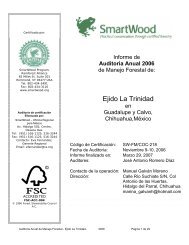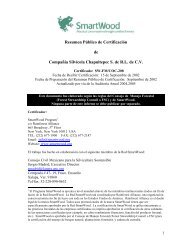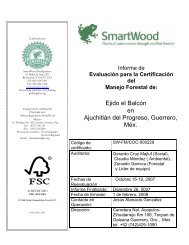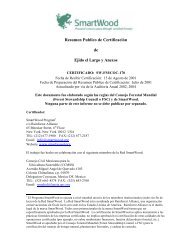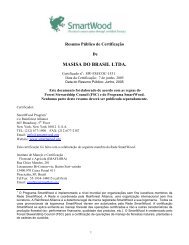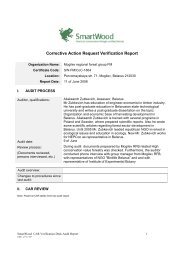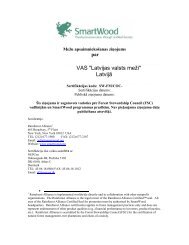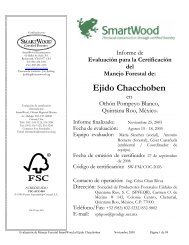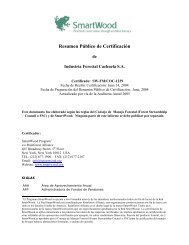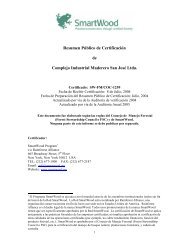Forest Management Certification Assessment Report for - Rainforest ...
Forest Management Certification Assessment Report for - Rainforest ...
Forest Management Certification Assessment Report for - Rainforest ...
Create successful ePaper yourself
Turn your PDF publications into a flip-book with our unique Google optimized e-Paper software.
FSC PrincipleP6: EnvironmentalImpactComments from InterestedPartiesrisk assessment regarding potentialenvironmental impacts.• Past compliance regarding theprotection of rare, threatened andendangered species has been poor.Harvesting by Tembec has directlycontributed to the decline in caribouand destruction of habitat <strong>for</strong> bulltrout. Tembec is not following the“best available in<strong>for</strong>mation”regarding caribou management in theSouth Purcells.• No restoration areas defined – thereare significant areas (including someriparian areas and some clearcuts inESSF) that should be designated asrestoration areas (e.g., Kidd Creek,Skelly Creek, Bighorn Creek,extensive areas of fire-maintainedNDT 4 habitats in PP and IDF).<strong>Assessment</strong> Team Response• Tembec has developed acomprehensive management system thatprovides safeguards to protect rare,threatened and endangered species andtheir habitats. The habitat needs ofthese species are addressed throughboth species-specific and coarse filtermanagement strategies. Severalstrategies, including identification ofHCVF areas are being implemented toprotect the most controversial species,mountain caribou. The team recognizesthat the Caribou situation is veryserious. The team concluded thatTembec is taking steps that are withinits control to facilitate the survival andrecovery of mountain caribou in theabsence of a government endorsedrecovery plan. Other significant factorsexternal to Tembec’s operation will becritical to protection of cariboupopulations in future.• The Team investigated the potentialneed <strong>for</strong> the designation of restorationareas in several watersheds. Whilerestoration activities were required inthese watersheds, their designation as“restoration areas”, as defined inIndicator 6.3.1, is not necessary toaddress the issues that are identified thewatershed assessments. Restorationactivities in the Rocky MountainTrench are ongoing and part of aplanning process. However, morecoordination is needed with the TrenchRestoration Steering Committee and theMinistry of <strong>Forest</strong>s and Range to planrestoration activities in priority areasand allow <strong>for</strong> the slashing and burningfollow-up that is required <strong>for</strong> properimplementation. Further coordinationis also required to prevent or mitigatethe negative impacts on the ecosystemassociated with cattle grazing. (e.g.,spread of noxious weeds and thedegradation of water courses). Allparties appear to be equally responsiblePage 27 of 89





